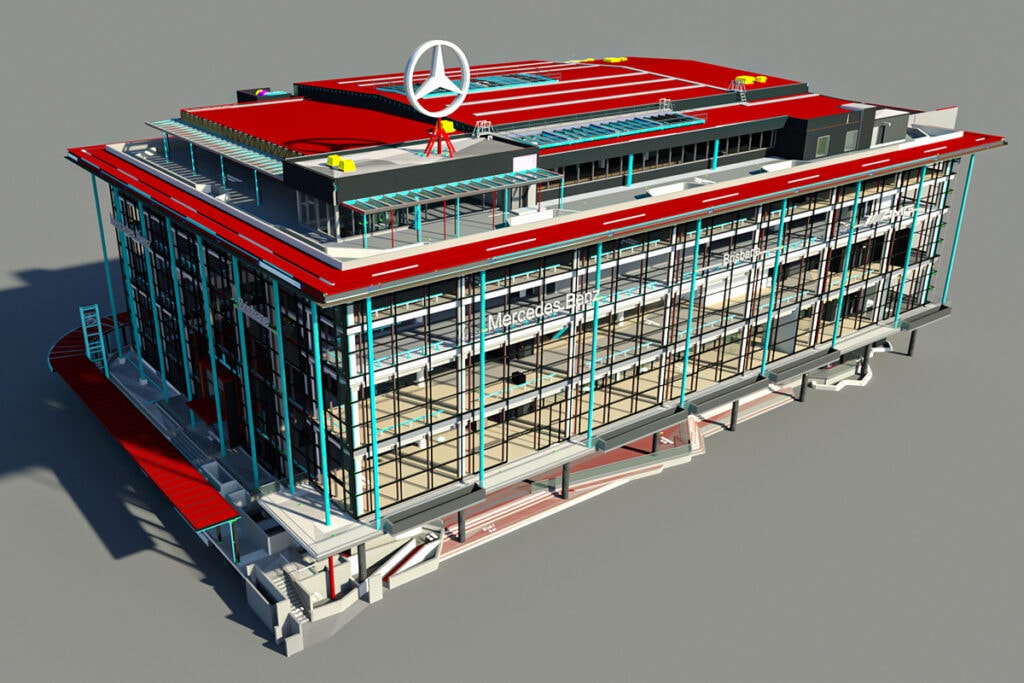The Problem with Digital Engineering
Digital engineering strategy involves capturing and integrating data into a federated model or Digital Twin so that it can be leveraged by construction teams, asset owners and/or facility managers. It can facilitate governance, transparency, and enhanced decision making, for better project outcomes and long-term savings.
The problem is, in the traditional Design-Build-Manage lifecycle of a project, there are often no digital engineering specifications or client requirements. Instead, design teams use their own standards, and the focus is very much on design, rather than construction.
So, what’s the deal with Digital Twins? These days, everyone wants a digital twin or some form of digital representation of their asset. The problem is, as an emerging market segment, buzzwords and misconceptions about Digital Twins are rife. A Digital Twin is a database and representation of physical assets and linked events. This ‘thing’ can be anything from a building or a power network, to a bridge, or even industrial equipment. It can include elements like water, people and vehicle movement, and is a platform through which to interrogate or exchange data. Importantly, a Digital Twin can span the entire lifecycle of a physical asset and is enabled with real-time data, allowing machine learning and simulations to facilitate better decision making. Ultimately, this leads to more informed outcomes in the physical world and new ways to deliver services.
In the design phase, there is usually no common data environment or central location for models. The frequency of sharing and reporting is not set, and there is no overarching coordination. This means the handover of the model and its associated data to the construction phase is either poorly managed or non-existent.
As a result, when construction commences, models are not centralized, standardized or coordinated. The data is incomplete or inconsistent, or it has been modelled in such a way that it fails to consider construction.
If the federated model poses challenges during construction, then it is simply not used. The project team loses faith in the model and reverts to traditional work methods that rely on 2D plans.
As the model is not updated throughout the construction phase, handover of as-built models to the client becomes nearly impossible, with ‘retrospective’ BIM (and rationalisation of years’ worth of data in some instances) required in an attempt to ensure the model aligns with the on-site structure.

A Nimble Digital Engineering Firm can Overcome the Problem
Given this problematic climate, how do you choose the best possible digital engineering service provider? What criteria do you use to assess the quality of data captured, or the effectiveness of a virtual model?
While some large, global consultancies provide digital engineering in their suite of services, it is often the more nimble providers that can deliver practical outcomes to overcome the problem with digital engineering in both CAPEX and OPEX projects. A nimble firm will deliver a solution that is tailored to the needs of the business and backed by in-depth tangible project delivery expertise.
A nimble provider will deliver a technical and practical solution focused on first principles around foundational data sets that encompasses an assessment of both existing data and future state needs, and then details a roadmap on how to get there.
Tangible In-Depth Project Delivery Expertise
Whether it’s a large-scale mega project, complex machinery with thousands of moving parts, or the most intricate of building services that cannot clash, a digital engineering partner that has tangible in-depth project delivery experience will provide the best outcomes.
Having worked on some of the largest and most complex transport, infrastructure, mining and commercial projects in the world, an experienced team is able to take a step back and identify the commonalities between seemingly different projects. They can then apply previous project experience and lessons learnt to produce informed strategies and advice based on tangible project delivery experience.
It is also important that a digital engineering partner invests in team members who not just technical modeling and detailing resources. Ideally, their team members should have a multi-disciplinary background, holding degrees or with extensive experience in construction management, architecture, leadership and business. This type of training hones their commercial acumen, ensuring a sound understanding of a business’ operating environment.
Practical Strategy Implementation
With a nimble digital engineering provider, there is no strategy for strategy’s sake. There are no high-level, warm and fuzzy, pie-in-the-sky concepts.
Instead, their strategies set clear objectives and define the reasoning behind these objectives. They outline a suggested approach, as well as specific, actionable tactics to achieve the objectives. A nimble provider is then also able to execute these tactics.
In comparison, larger firms generally specify a high-level digital engineering strategy that requires practical delivery by either the client themselves, or another third-party provider. Smaller firms specialise in practical delivery of basic BIM services, but cannot offer the strategic approach needed to ensure success.

An Entire Project Lifecycle Approach
Digital engineering should involve managing the digital asset from initial scoping, right through to the end of the asset lifecycle. This goes beyond simply creating 3D models. It’s an approach that integrates data and model structures by leveraging multiple primary information sources to facilitate project collaboration, clarify decision-making and streamline project delivery.
Nimble firms deliver a holistic digital engineering service that adds value at every stage of the Design-Build-Manage lifecycle, from initial scoping and 3D visualization, through to holistic ongoing management. This means that they understand what, and how, to capture the necessary data right from project inception. Their custom-designed governing processes and workflows streamline this data capture and input and are integral to maintaining the model as a single point of truth and enabling the transfer of data to the facilities management phase.
Contracting Expertise
Time and again, knowledge of the contract environment proves essential in the digital engineering process. Digital engineers can specify any number of factors, but unless there is an understanding of how to enforce these specifications via a contract, they simply will not be successful. An in-depth understanding of construction management ensures that a digital engineer understand not only how to develop technical workflows, but how to enforce these via contract mechanisms.
An understanding of how to interpret and apply the relevant standards and regulations to a project or workflow (and how to rectify the situation when they have not been applied) is also essential. In this way, digital engineering can help ensure an asset is structurally sound and legally secure for complete peace of mind.
Client Specific Frameworks
Every project should begin with a thorough assessment of where a client sits in their digital engineering journey. An expert digital engineering firm will take the time to understand the business, its objectives and its operating environment. They should pinpoint existing elements and workflows that might need slight tweaks to achieve the desired outcome, rather than making broad brushstroke suggestions that require whole-of-business transformations. A client should not be expected to adapt to a pre-formulated digital engineering framework. Instead, the right digital engineering firm will collaborate to devise a tailored, cost-effect framework that works specifically for the business.
Nimble digital engineering firms are uniquely placed to devise an overarching digital engineering strategy and then implement this strategy’s tactical building blocks. They can reach up to devise a blue-sky vision and reach down to deliver.



